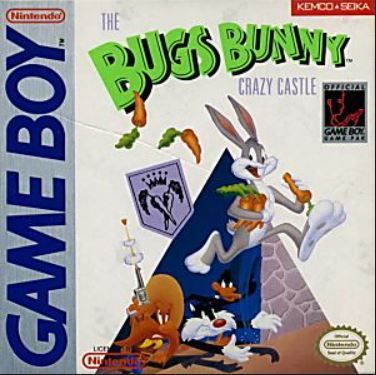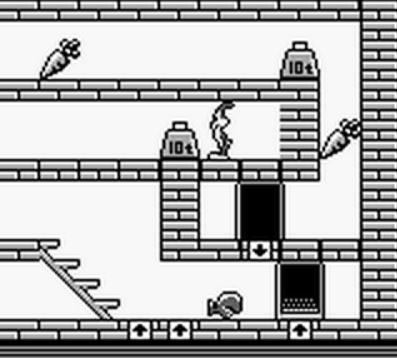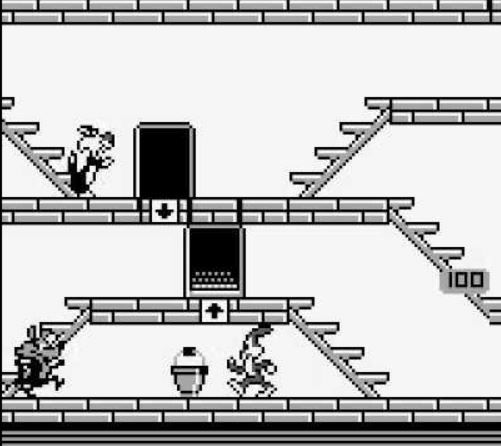Handheld gaming is more than a compromise of power and portability. Whether it’s the ability to play anywhere, multitask or hold an entire console in your hands, it’s a special experience consoles have never replicated. In a world where high resolutions and teraflops reign supreme, we take a look at a portable relic every month and reflect on what makes it memorable. Be warned, spoilers may occasionally populate these articles.
Licensed games, particularly in the 20th century, were considered the low-hanging fruit when you needed to trash a game. This reputation was not undeserved as many of these games featured generic-to-bad gameplay and bore little resemblance to the source material, save for the box art and character sprites. This is great for lazy writers, however, who can't be bothered with thinking of a creative intro paragraph. But there were a few games that proved to the be the exception to the rule, and while The Bugs Bunny Crazy Castle doesn't recreate the zany violent mayhem found in Looney Tunes cartoon shorts, it was a fun game with passable nods to the source material.
The Bugs Bunny Crazy Castle features the damsel in distress plot, a basic plot device whose corpse has been continuously desecrated long after games had done this idea to death. Honey Bunny has been kidnapped by the supervillain ensemble of Daffy Duck, Sylvester J. Pussycat, Wile E. Coyote and Yosemite Sam. Why Lex Luthor's inspiration and Bugs' arch nemesis Elmer Fudd isn't involved in the plot is a mystery that baffles the greatest analytical minds even to this day, but the game sticks to actual Looney Tunes characters instead of random made-up enemies which is at least a step in the right direction.
The gameplay of The Bugs Bunny Crazy Castle amounts to being a side-scrolling puzzler game. Bugs has to navigate through eighty levels collecting eight carrots in each one in order to progress. The nefarious troupe of mismatched cartoon villainy roams each level, and Bugs had to travel to different levels in each room through tubes while avoid crossing paths with his enemies. Bugs is unable to fight any of these characters directly, and despite being a rabbit cannot jump to avoid harm. Design choices were questionable in many licensed games of the era, but even with a non jumping wascally wabbit and absentee Fudd, this still ended up being a fun game.
Because of Bugs was not gifted with functioning attack or jump buttons he had to figure out other ways to get around his adversaries. Each character had limitations and how they could move through the level and knowing their limits made it easier to figure out where the safe spots were. While Bugs had no direct attacking abilities, there were plenty of options laid about each level to dispatch the unwanted advances of his enemies. There were invincibility potions that could weaponize simply walking into them, but as this is a Looney Tunes property there were several more violent means of disposable. Rocket-powered boxing gloves were useful to knock someone out and the option to drop safes, ten ton weights and flower pots on the other characters' heads was a good means of dispatching them.
An interesting tidbit of trivia is the original Japanese Famicon version is who framed The Roger Rabbit Crazy Castle and was based on the film Who Framed Roger Rabbit? Due to issues of different publishers having different licensing rights in different countries, there was already a Roger Rabbit game in North America, so when they ported to the American Game Boy Kemco acquired the rights from Warner Bros. to make it a Bugs Bunny game, since switching from one cartoon rabbit to another seemed relatively easy. Which makes the saga even weirder is the Japanese Game Boy title starred Mickey Mouse when licensing for Roger Rabbit ended and Kemco acquired the rights to Disney.
The Bugs Bunny Crazy Castle is one of the Game Boy games that doesn't get brought up too often but is a hidden gem with its simplicity. The puzzle mechanics are basic; run through the rooms searching for carrots while avoiding/dispatching enemies. The eighty rooms does seem like a lot, but experienced players can complete it in just a couple hours. As a 30-year-old game it would seem basic to anyone playing it today, but it's still an enjoyable way to kill an hour or two regardless of the limitations.
Get more Pocket Power. Click here to view every Pocket Power so far and prepare for a pocket-sized stroll down memory lane.




